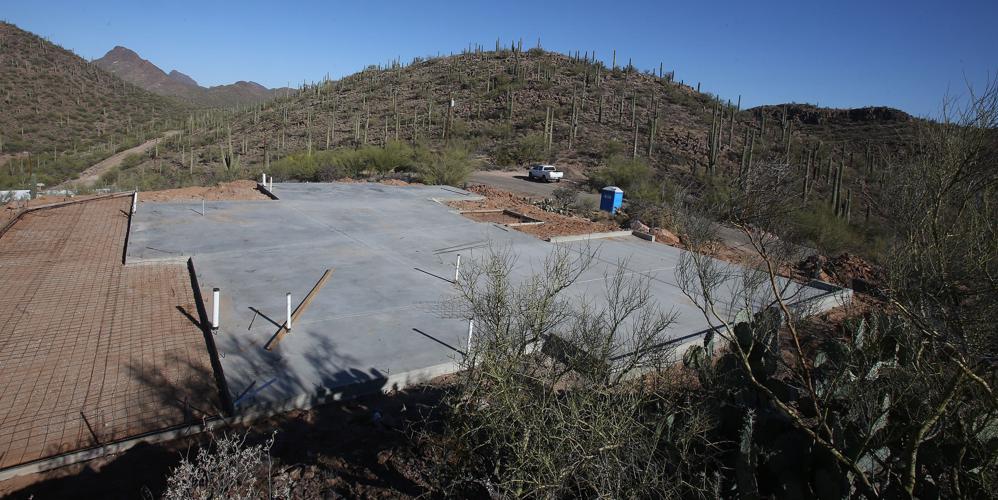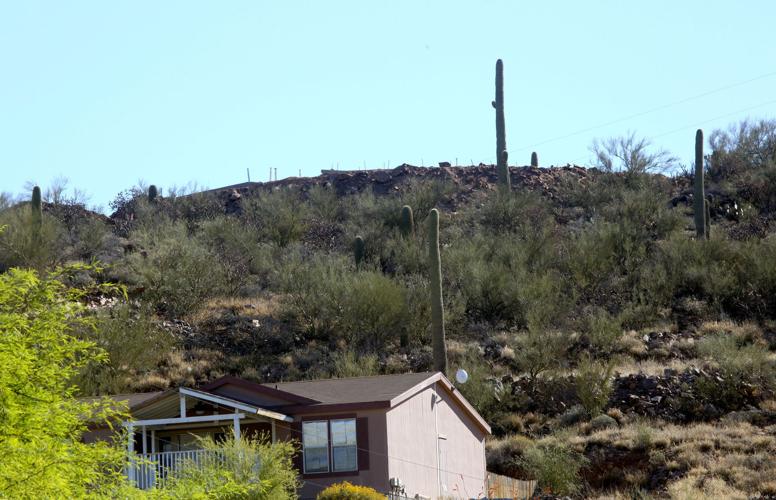About a year ago, Ely Badilla thought he had found the perfect spot to build his first home, a project he had spent years saving for.
The nearly one acre-lot on the south end of the Tucson Mountains offered sweeping views to the south, as well as relative isolation while still being just west of city limits.
“Bring your mobile or manufactured home; build your dream home,” a property advertisement available online still reads. “High enough to delight in the Tucson city lights and be amazed by the stars in the night sky.”
But even though the home is now being built, things did not go as smoothly as Badilla, 29, had hoped.
During the deal’s due-diligence period, Badilla said he went to the Pima County Development Services Department seeking information on the property, but didn’t learn one critical thing before submitting building plans and getting a construction loan: Nearly the entire property was within a Level One Protected Peaks and Ridges area, meaning any development would need a special-use permit only the county Board of Supervisors could approve.
He said he wouldn’t have bought the land if he had known that.
“It was the county that was supposed to reveal this information to me,” he said.
During the Dec. 13 supervisors meeting, Badilla did get that permission, but not without a little stress. Before moving the item, Supervisor Richard Elías, whose district includes the property, said, “I’m frustrated and I’m inclined to deny this,” pointing out later the board had recently shot down a comparable request.
“My heart dropped!” Badilla told the Star last week of his reaction to Elías’ opening comments. “What am I going to do with a piece of land that I can’t do anything with?”
More recently, Badilla filed a notice of claim, a precursor to a lawsuit, seeking roughly $27,000 from the county because of the restrictions on the property stemming from its peaks and ridges status. He is also asking that he only be assessed property taxes on the portion of the property he can develop.
County Administrator Chuck Huckelberry said the county is not likely to respond to the claim, which was discussed by supervisors in executive session March 21.
During the December meeting, Badilla told the supervisors that neither the sellers’ real estate agent nor the title company alerted him to the property’s status, and added later the agent said she was unaware of it. Badilla said he did not have a real estate agent representing him.
Chris Poirier, planning director with development services, said that because the undeveloped subdivision the property is a part of was platted two years before the first peaks and ridges restrictions were approved in 1976, the plat would not have contained information about them.
Now, Poirier said any approved subdivision development would include peaks and ridges information in the plat.
“I could see how a title company could miss it,” he told Elías earlier.
But Elías also asked Poirier to explore what his department could do to make such situations less likely.
In response, Poirier recently said his office is checking on how the problem happened and “did it occur on our end?”
Poirier said development services tries “to be as transparent and push out as much information as we possibly can,” he said, but added that “there is a point though, where some people, they miss something. There are so many things in our zoning code, and so much information.”
Huckelberry said development services had “acted within the guidelines of their code, and that’s all they can do. They’re not supposed to represent a private seller or a private buyer, or act as a title company.”
Badilla conceded that Poirier’s department was “very helpful. I can’t say they weren’t.”
Throughout the ordeal, the most important piece of information — the peaks and ridges area boundary — was publicly available online at the county website.
One improvement being developed that could make situations like Badilla’s less likely is an automated way to determine if a property lies within a hillside development zone, which are much more likely than other properties to have peaks and ridges restrictions. That information is already available to staff, but once development services is sufficiently comfortable with its accuracy, it will be made publicly available to would-be buyers and their agents.
“We’re just trying to continuously improve what we have to provide information,” Poirier said.





